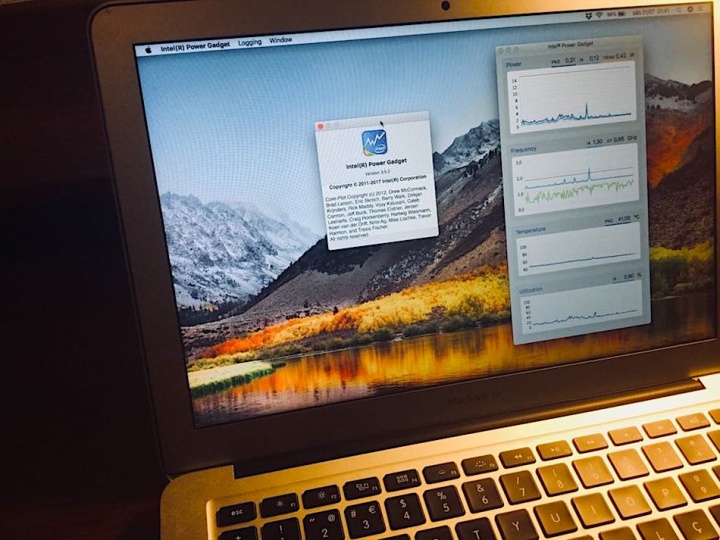

- #Old versions intel power gadget full#
- #Old versions intel power gadget pro#
- #Old versions intel power gadget free#
Put the other way round, if you see % CPU at 40% and your Mac has eight cores, that’s an average active residency of just 5% on each core.
#Old versions intel power gadget full#
Furthermore, when an Intel core uses hyperthreading to boost its performance, scale maximum for % CPU doubles: with eight cores in full hyperthreading, that comes to a total of 1600%.

This is the total for all CPU cores, so if your Mac has eight cores, the scale maximum for % CPU is 800%. So if a core were completely idle, active residency would be 0% when no idle cycles were recorded, it would be 100%. As far as I can tell, the figure given is the total of ‘active residency’ for all cores, meaning the percentage of core cycles that aren’t spent in idle. Unfortunately Apple doesn’t appear to define what the % CPU column means, other than stating that it’s “processor capability”. This article tries to explain that what you’re looking at probably isn’t as bad as you think, and how it can be particularly misleading on an M1 Mac. If we see anything over about 20%, we get alarmed and start asking questions, as if % meant out of a hundred. Which is a far cry from “the new MacBook sucks at everything just because it sucks at premiere”.The first place most of us turn to when we’re concerned about the performance of any Mac is Activity Monitor’s CPU tab, where we can see which processes are hogging the cores.
#Old versions intel power gadget pro#
Which basically boils down to - use a Mac for Final Cut Pro and windows for premiere. What he has done here is allow users to make a more informed decision. Just like his earlier video showing how Final Cut Pro runs smoothly on a MacBook, it just proves that Macs are optimised for certain workflows and suck at others. Sure, it was informative to a degree and had some results, but I wasn't really keen in the statement that the results were "skewed" due to the use of Premiere and that the actual title of the video was kinda condescending by saying that everyone is "wrong" about the Core i9 MBP That's one of the reasons why I was kinda let down by the Morisson video. But if the same happens to the Mac, it goes into one of those "You're using it wrong" scenarios. When this happens to a Windows laptop (which has), you'll see people quickly criticizing and even bash it. I hate to say it, but part of the reason why are due to the apologists. And if you don't have hard TDP limits, you should at least give the maker of the machine or better the user the ability to fine tune the power consumption a bit and allow either a more safe/conservative setting and the shit what we have right now. It might give you the edge in (some) benchmarks but in the long run it causes more trouble than its worth. That doesn't look like it is a particularly good idea.
#Old versions intel power gadget free#
So the CPU runs free and goes way over the TDP until the heatsink is saturated and throttles again. What that looks like is that this isn't really a 45W TDP Chip and neither hasconfigurable TDP limit like AMD has implemented since Kaveri (just look for cTDP). and that seems to be the biggest problem here and that its not possible for the manufacturer of the Device to define Power Limits and implement it so that they can make their cooling for the chip. You know in every video that the Intel power tool also shows how much power the CPU is using right? TDP != Power Draw ever for CPUs, never has meant that.Īnd yes the i7 has similar problems but much less of an issue so actually in many cases performs better than the i9


 0 kommentar(er)
0 kommentar(er)
